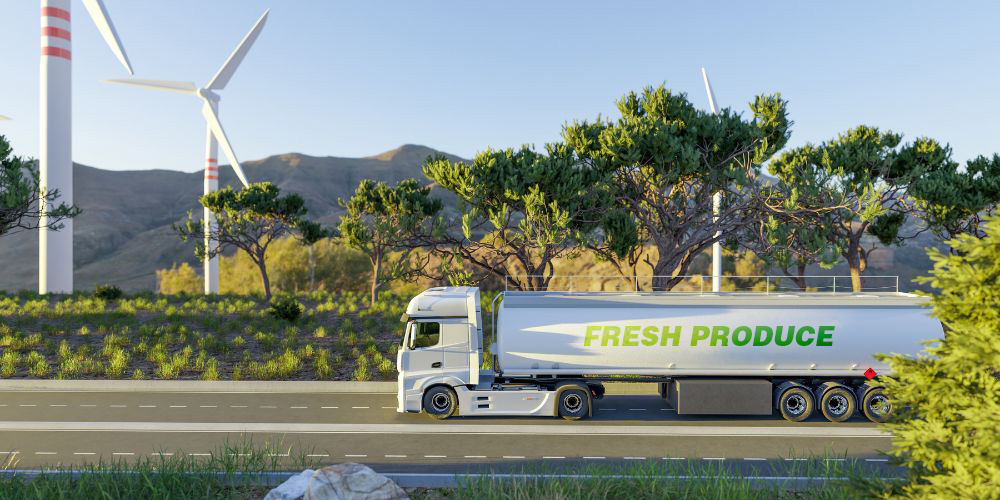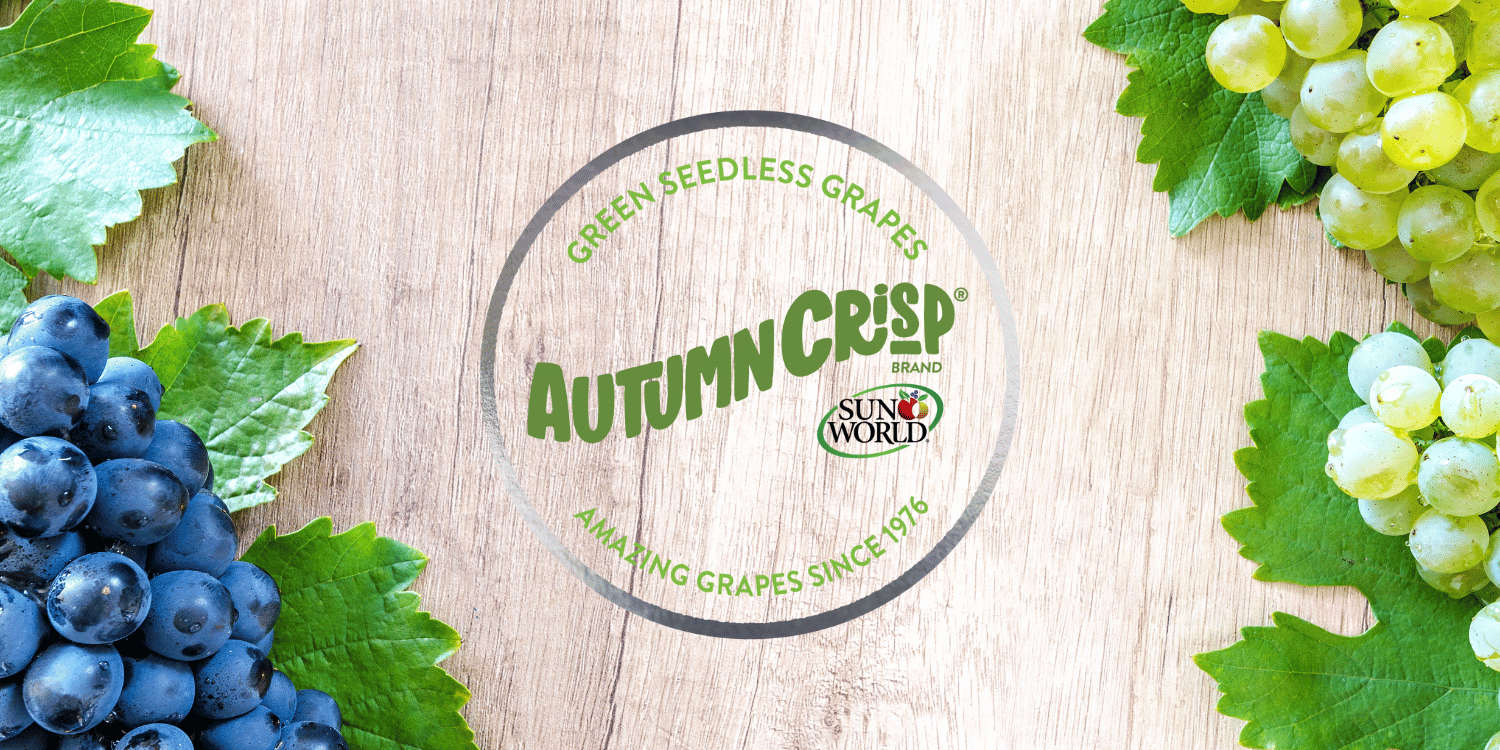The agricultural sector confronts numerous challenges in ensuring fresh produce reaches consumers promptly and in optimal condition.
Despite the important role played by this industry, transportation difficulties can often undermine these efforts.
Increasingly, many industries have begun to leverage innovative approaches to curb similar logistical challenges.
Remarkably, adopting these novel principles and strategies in the transportation of agricultural produce has shown encouraging results.
This article examines such transformative solutions, their efficacy, and how they are shaping the future of produce transportation.
The primary focus is on strategies that promote efficiency, sustainability, and overall improvement in the management of agricultural supply chains.
- Blockchain implementation enables real-time freight tracking.
- Artificial intelligence is used to optimize cargo space.
- Self-driving vehicles are increasingly used for deliveries.
- Advanced packaging developments enhance produce shelf life.
- Solar-powered refrigerated trucking is an emerging innovation.
Our exploration into efficient produce transportation doesn’t end here. The following sections will broaden your understanding of how technology is transforming this industry.
We’ll discuss further how modern tech is aiding in logistics optimization, a crucial aspect of this sector. Not only will we touch upon its current application but also dig in into its future potential.
For individuals interested in environmental sustainability, our focus on solar-powered trucking will offer intriguing possibilities. I believe this knowledge will prove invaluable; whether you’re involved in the industry or just curious about the subject.
You won’t want to miss out on what comes next.
Contents
- Innovative Solutions For Efficient Produce Transportation
- 1. Implementing Blockchain for Real-time Freight Tracking
- 2. Utilizing AI to Optimize Cargo Space
- 3. Investing in self-driving vehicles for deliveries
- 4. Developing Advanced Packaging to Increase Shelf Life
- 5. Introducing Solar-Powered Refrigerated Trucking
- 6. Establishing Local Distribution Centers for Quicker Delivery
- 7. Promoting Use of Drones for Farmers’ Market Delivery
- The Bottom Line
Innovative Solutions For Efficient Produce Transportation
1. Implementing Blockchain for Real-time Freight Tracking
In Short: Blockchain technology has the potential to revolutionize the transport of produce by providing efficient and sustainable real-time freight tracking. Despite initial challenges like integration with existing systems and educating stakeholders, the enhanced transparency, reliability, and cost-effectiveness of this technology can lead to improved supply chain management and sustainable transportation.
In our pursuit towards leveraging technology for a more efficient and sustainable produce transportation, blockchain emerges as a prime solution for real-time freight tracking.
The enormous potential of blockchain technology in supply chain management can transform the way we track and manage our deliveries.
Blockchain, by its very nature, provides transparency and traceability— two crucial aspects for building trust and efficiency in the produce transportation landscape.
When integrated with the logistics supply chain, blockchain can ensure the authenticity of tracking data since it eliminates any possibilities of data manipulation.
In a traditional setup, freight updates are often delayed, and the information may be inaccurate.
However, with blockchain technology, companies can have real-time access to the location of their cargo until the delivery endpoint, thereby reducing uncertainties and improving planning.
Consider the following points which further highlight the significance of blockchain in real-time freight tracking:
- Decentralization: With no central authority, all parties involved can have a unified view of the transaction, enhancing trust and cooperation.
- Security: Blockchain ensures data security with its cryptography features, making it almost impossible to hack or manipulate the data.
- Reduced Costs: As blockchain eliminates the need for intermediaries, the overall costs, including those associated with paperwork and administrative procedures, can be significantly reduced.
Despite these benefits, it’s important to recognize that implementing blockchain is not a silver bullet solution.
One of the challenges that many companies could face is the integration of blockchain technology into their existing systems.
This could require a significant investment in terms of time, money, and resources.
Apart from that, there is also the issue of educating everyone within the organization about how blockchain works.
It’s essential to involve all stakeholders in the process, ensuring that they understand the benefits, how to use the system, and what changes to expect.
Pro Tip: Blockchain technology presents enormous potential for improving efficiency and transparency in the logistics supply chain by providing real-time freight tracking and reducing costs associated with intermediaries, paperwork, and administrative procedures, despite the considerable investment required in terms of integration, time, resources, and education within the organization.
While these challenges may require some effort and patience to overcome, the results could be well worth it.
With blockchain, real-time freight tracking becomes reliable, transparent, and efficient, enhancing overall supply chain management and ultimately leading to more sustainable and efficient produce transportation.
2. Utilizing AI to Optimize Cargo Space
In Short: Artificial Intelligence (AI) is being leveraged to streamline product transportation in agriculture by optimizing cargo space, reducing trips, saving fuel, and lowering wear and tear on vehicles. Successful implementation requires a strategic approach and commitment to continuous learning and adaptation, therefore, alongside technological investment, workforce training is critical.
Product transportation within the agricultural industry has always been a huge operational challenge.
One of the most promising innovations in this area is to leverage artificial intelligence (AI) to optimize cargo space.
Efficient use of cargo space can drastically reduce the number of trips needed, therefore minimizing the cost and environmental footprint of produce distribution.
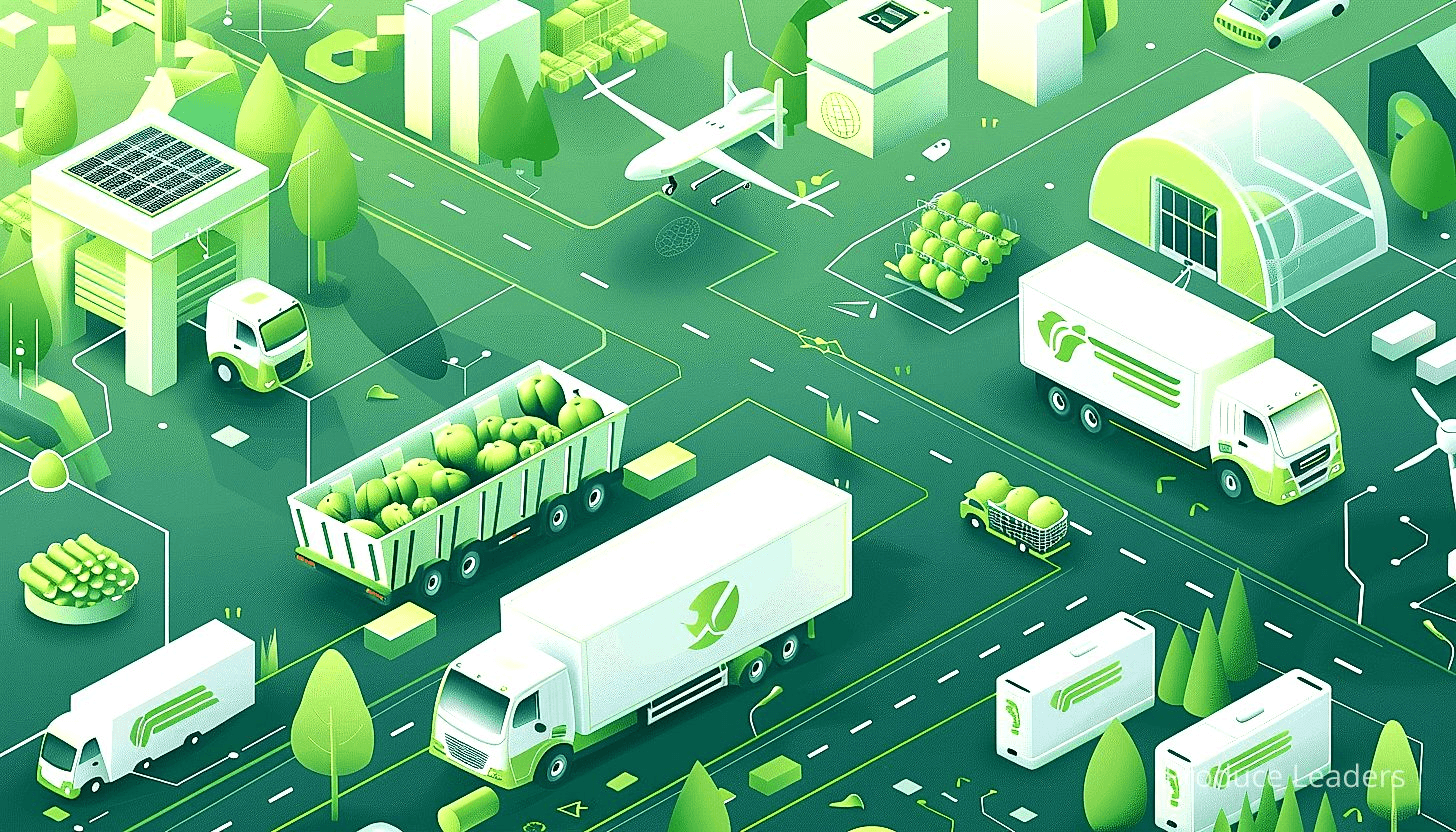
The key value of AI lies in its ability to analyze vast amounts of complex data quickly and accurately.
When it comes to cargo optimization, this means that AI can consider variables like the size, shape, and weight of produce boxes, along with other factors like the order of deliveries, road conditions, and weather forecast.
This information is then used to generate the most efficient packing arrangement possible.
But the potential advantages don’t stop at saving space.
By reducing the number of trips needed, companies can also save fuel, lower wear and tear on vehicles, and free up time for drivers – all of which can have a positive impact on the bottom line.
This is why optimizing cargo space using AI is such an important step towards a more efficient and sustainable produce transportation system.
Let’s dig in deeper by examining some specific ways AI can enhance cargo optimization:
- Customized load plans: AI can craft detailed load plans that consider all relevant factors. This eliminates the guesswork and ensures each trip is as efficient as possible.
- Real-time adjustments: Given its ability to process information rapidly, AI can make adjustments on the fly, adapting to unforeseen circumstances like changes in weather or traffic conditions.
- Improved predictive capabilities: AI can use historical data and trends to make accurate forecasts about future needs and conditions. This can help in planning and could even allow companies to pre-emptively address issues before they become problematic.
It’s clear that investing in AI for cargo optimization can offer a multitude of potential benefits.
However, it’s important to remember that successful implementation of AI isn’t just about having access to the technology – it also requires a strategic approach and a commitment to continuous learning and adaptation.
Developing the necessary skills and experience within the workforce is therefore a crucial part of this process, and something that companies need to consider alongside their technological investments.
Considerations aside, the importance of AI in optimizing cargo space cannot be overstated when talking about innovative solutions for efficient produce transportation.
3. Investing in self-driving vehicles for deliveries
In Short: Investing in autonomous vehicles for efficient produce delivery could substantially lessen labor costs, increase safety, optimize fuel consumption, and decrease traffic congestion. Despite potential technology and cybersecurity challenges, the push for self-driving vehicles represents a promising revolution in the transportation of agricultural commodities.
When discussing innovative solutions for efficient produce transportation, one can’t ignore the potential of self-driving, or autonomous vehicles.
With the ongoing growth in technology, it’s only a matter of time before we witness a meteoric rise of autonomous delivery vehicles, especially in the agriculture industry.
The idea of self-driving vehicles for delivery of produce might be a bit puzzling initially, but let’s dig in into the most important point of its benefits and understand why it’s a noteworthy investment.
The significant savings on labor costs standout as the most immediate benefit of investing in self-driving vehicles.
Automated deliveries eliminate the need for a delivery workforce, thus substantially reducing costs associated with wages, overtime, insurance, and other employee-related expenses.
The capability to operate around the clock enhances the delivery efficiency as these vehicles are not restricted by human workhours.
The following points will dig in into some noteworthy advantages of utilizing autonomous vehicles.
- Increased Road Safety: Autonomous vehicles can reduce traffic accidents caused by human error.
- Optimized Fuel Efficiency: Autonomous vehicles can select the most efficient routes and maintain optimal speeds, potentially reducing fuel consumption.
- Reduced Traffic Congestion: By being part of a networked system, autonomous vehicles can coordinate and reduce peak-time traffic congestion.
- Environmentally Friendly: Most autonomous vehicles are electric, making them more eco-friendly than traditional gas-fueled vehicles.
Despite these apparent advantages, challenges and obstacles in implementing autonomous vehicles shouldn’t be disregarded.
There are legitimate concerns over technological failures and cybersecurity threats.
Regulatory issues are also a factor as current rules and regulations related to road usage and transportation might not accommodate the autonomous vehicles’ needs.
Investment in research and development, infrastructure, and technological advancement are necessary to address these challenges effectively.
Let me tell you, while the benefits of automatic vehicles are impressively promising, comprehensive understanding and cautious implementation strategies are important.
Pro Tip: Investing in autonomous vehicles for produce delivery can significantly save labor costs, increase road safety, optimize fuel efficiency, and reduce traffic congestion, making it an innovative solution for efficient transportation in the agriculture industry.
One thing is for sure, investing in self-driving vehicles for produce delivery has a significant potential to revolutionise the transportation of agricultural commodities.
The reality of more productive, efficient, and sustainable farming and distribution of produce is closer than ever with this innovation.
4. Developing Advanced Packaging to Increase Shelf Life
In Short: Advanced packaging using nanotechnology is transforming produce transportation, stretching shelf life and reducing food waste. Emphasizing environmental sustainability, these advancements, including bio-based and nano-enhanced packaging, offer logistical efficiency and real-time data monitoring, paving the way for the future of fresh produce transportation.
The world of produce transportation is on the brink of revolutionizing change through innovative solutions such as advanced packaging.
These cutting-edge technologies aim to enhance the shelf life of produce, ensuring their freshness during transportation and reducing overall food waste.
Firstly, the use of nanotechnology in packaging has a significant function in extending the shelf life of many distinct types of produce.
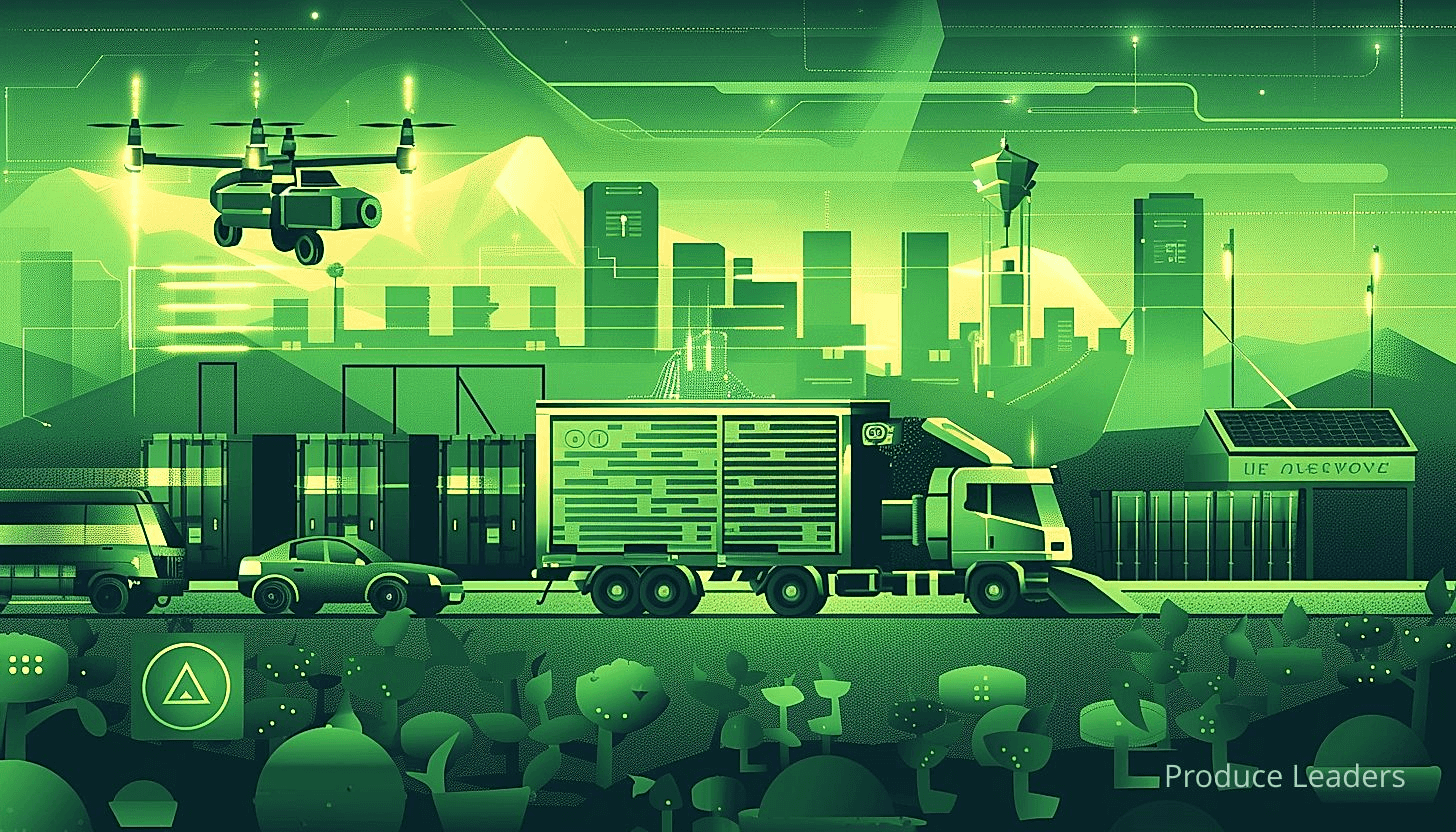
These involve the creation of nanosensors and nanocomposites that aim to prevent microbial growth and detect any signs of spoilage.
More recently, the nanoclays are gaining recognition for their exceptional gas barrier properties, giving produce an extended life.
By optimizing the handling of humidity, introducing controlled respiration rates, and implementing food-safe gas compositions, these advanced packaging solutions offer a great deal to the efficiency of produce transportation.
However, benefits of using this advanced packaging to increase the shelf life of produce are numerous.
A few of the advantages of such solutions include:
- Significant reduction in food waste, leading to increased efficiency and cost savings.
- Longer preservation periods, ensuring fresh produce despite long transport durations or delay.
- Barrier to bacteriological and enzymatic action, reducing the chances of foodborne diseases.
- Visual appeal holding as the produce stays fresher for longer, serving as a marketing advantage.
- Sustainability through use of recyclable and biodegradable materials.
Another key factor in the development of advanced packaging technologies is the environmental sustainability.
In the urgency of the current global climate crisis, it is imperative that the packaging we utilize is not only effective in extending the life of produce but also presents minimal harm to the environment.
This can encompass the usage of bio-based materials for packaging, that are biodegradable and reduce the carbon footprint generated by traditional plastic packaging.
Furthermore, the implementation of these advanced packaging has also shown a substantial improvement in the logistics efficiency of produce transportation.
Nowadays, many companies are invest in Research and Development (R&D) to create smart packaging that would not only accommodate longer shelf life but also provide data about product quality, location, and temperature – all in real time.
Centrally, to sum up, the future of efficient produce transportation is undeniably intertwined with the continued development and application of advanced packaging solutions.
As the technology progresses, solutions like nano-enhanced and bio-based packaging are set to become the norm, rather than the exception, in the transport of fresh produce all around the world.
5. Introducing Solar-Powered Refrigerated Trucking
In Short: Solar-powered refrigerated trucking represents a sustainable revolution in produce transportation, utilizing the sun’s energy to maintain product freshness and quality while reducing carbon emissions. Although this innovative method requires initial investment, it offers significant long-term savings, potential for mainstream adoption, and positive environmental benefits.
Embracing sustainability in produce transportation is a significant move, and one of the groundbreaking approaches in this regard is the introduction of solar-powered refrigerated trucking.
At the heart of this revolution is an understanding that mitigating environmental impact, while enhancing the efficiency of produce shipping is a win-win scenario.
This technology harnesses the power of the sun, transforming it into energy capable of regulating the conditions inside a freight vehicle.
Most importantly, this method addresses a pressing need in the industry: the maintenance of optimal freshness and quality of produce during transportation.
Traditional methods utilizing fossil fuels not only lead to high fuel costs but also contribute to the negative effects of carbon emissions.
Solar-powered refrigerated trucks, on the other hand, curb these issues by generating and storing their own power, which it uses only as needed.
By doing so, this system significantly minimises greenhouse gas output, making for a beneficial approach when considering the environmental and economical aspects alike.
This is the reason why solar-powered refrigerated trucks are becoming popular among businesses interested in responsible logistics solutions.
Solar-powered refrigerated trucking comes with a few substantial benefits that are critical to consider.
- Reduced operation costs: the sun’s energy is free, and solar panels have long lifespans, requiring minimal maintenance.
- Energy efficiency: these trucks only use energy as needed, minimizing wastage.
- Improved freshness: the controlled refrigeration system ensures the produce remains in optimal condition throughout the journey.
- Eco-friendliness: this method considerably reduces carbon footprint compared to traditional transportation counterparts.
The above benefits, among others, highlight the worthiness of adopting solar-powered refrigerated trucking in the realm of produce transportation.
There is little doubt that transitioning to this innovative method requires substantial investment, from retrofitting existing fleets to buying new solar-powered vehicles.
Regardless, the possibility of long-term savings in operation costs, and the positive impact on the environment, outweigh the upfront cost concerns.
Moreover, with technological advancements, it’s likely the costs associated with these vehicles will decrease, making them more accessible for mainstream usage.
In essence, investing in solar-powered refrigerated trucking today could lead to fruitful returns for businesses, society, and the planet in the near future.
6. Establishing Local Distribution Centers for Quicker Delivery
In Short: Logistics companies are exploring local distribution centers to increase efficiency and sustainability in produce transportation, offering rapid, flexible delivery and reduced carbon emissions. However, implementing these centers faces challenges such as location availability, legal permissions, and high initial investments, necessitating cooperation from all stakeholders for success.
With advancements in technology and transportation, efficiency has become a paramount concern for logistics companies.
In produce transportation specifically, the need for quick and agile delivery options is most pressing.
This is due to the perishable nature of produce, thus necessitating a system that is capable of delivering fresh goods swiftly.
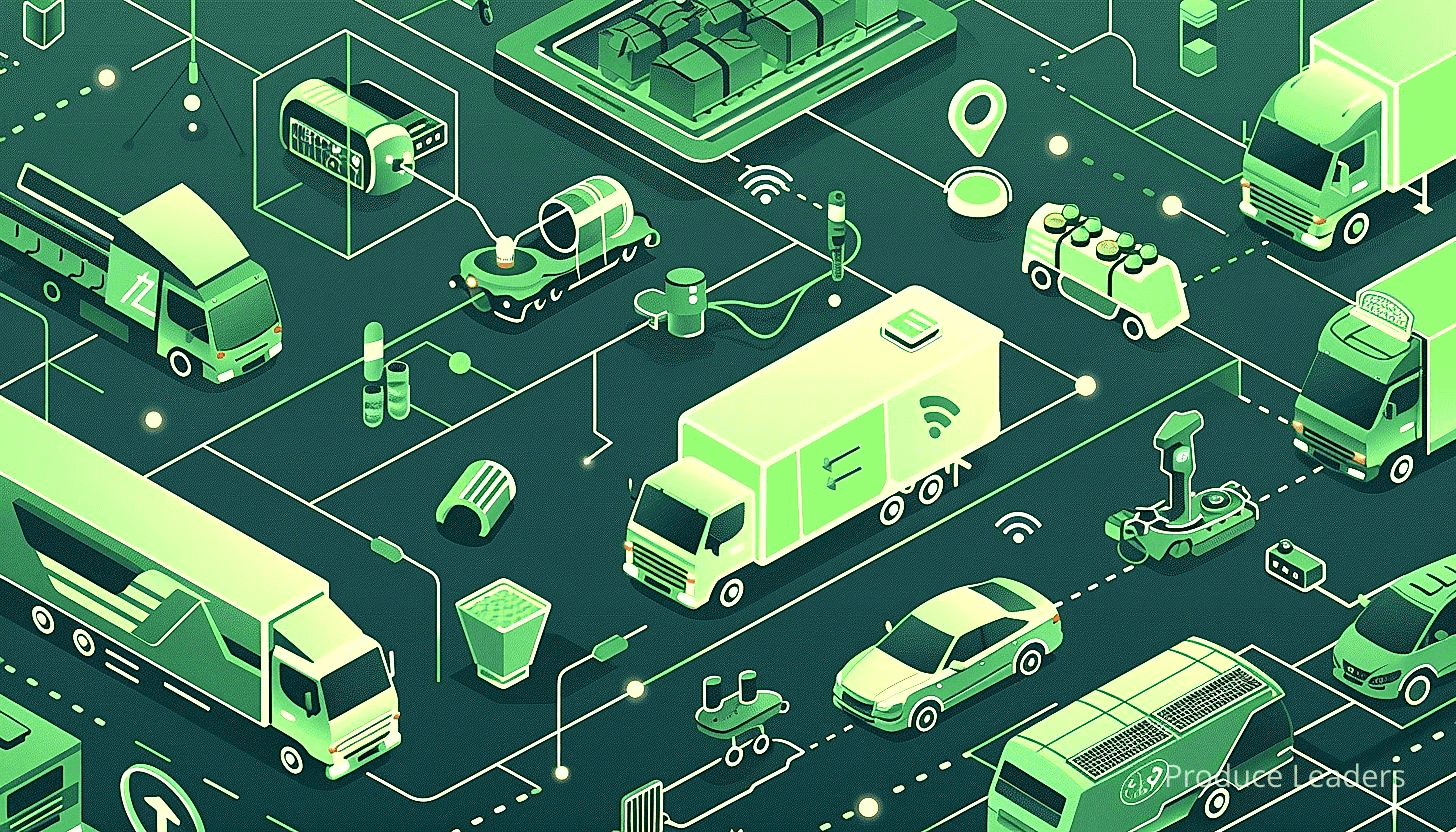
One innovative solution being explored by logistics companies is the idea of establishing local distribution centers.
Primarily in urban areas, these distribution centers serve as holding points for produce to be dispatched quickly to local consumers, maintaining freshness and reducing waste.
By adopting this localized approach to distribution, companies not only increase efficiency but also provide a more sustainable approach to produce transportation.
With this in mind, here are key points about local distribution centers:
- Local centers are strategically located to allow rapid delivery of produce to local customers.
- Local centers allow for flexible and agile adjustments in response to demand.
- By reducing the distance that produce travels, local centers also reduce carbon emissions and transportation costs.
- Local centers can adapt to unexpected events or weather conditions that could affect the delivery.
With these advantages, local distribution centers represent a prominent solution towards establishing an efficient and sustainable method of produce transportation.
However, the creation of local centers is not without challenges.
Availability of suitable geographic locations, securing necessary legal permissions, and the requirement for high initial investments are some of the barriers to be overcome.
Therefore, while the benefits of local centers are undeniable, it is crucial for logistics companies to thoroughly evaluate the feasibility of such a model within their operations.
Moreover, the success of local distribution centers is not solely reliant on logistic companies.
It necessitates a cooperative effort from all stakeholders, including retailers, consumers, and local governments, to realize the full benefits of such a system.
As the global community strives for sustainability and efficiency, local distribution centers are just one of numerous innovative solutions driving transformation in the field of produce transportation.
7. Promoting Use of Drones for Farmers’ Market Delivery
In Short: Drones present a promising opportunity for improving efficiency in the farm-to-table supply chain by offering speed, freshness, and cost-effectiveness. However, adopting this technology requires a significant investment, yet its potential benefits in expediting delivery and preserving product quality indicate a positive future for drone use in agricultural deliveries.
As we propel ourselves further into the 21st century, the prospects of employing advanced technology in everyday life seem increasingly plausible.
One such technological innovation that has captured our attention is the use of drones, specifically for speeding up and streamlining produce transportation from the farm to the buyers.
The implementation of drones, or Unmanned Aerial Vehicles (UAVs), offers a distinctly promising opportunity for improving efficiency in the farm-to-table supply chain.
This is not just conjecture, there are tangible benefits and advantages that drones present for farmers’ market delivery.
Here are some key reasons why drones are a lucrative option:
- Speed: Drones, unrestricted by road traffic and physical obstacles, can make quick deliveries, reducing the time taken to transport produce significantly.
- Freshness: Quick delivery ensures the produce remains fresh longer, allowing for higher quality products to reach the consumer.
- Cost-effective: Over time, drones can prove to be more cost-effective than traditional transport methods, especially for short-distance deliveries.
For farmers and agricultural entrepreneurs, the notion of significantly expediting delivery whilst also preserving product quality with the help of drones can be quite appealing.
Consider a scenario where a rural farmer needs to send fresh produce to a city-based farmers’ market. With traditional delivery routes often riddled with traffic congestion, the freshness of the produce can be compromised.
However, with drones, this isn’t an issue as they bypass troublesome road conditions, thus assuring the farmer that the produce will not only reach the market quickly but will also remain fresh upon arrival.
This in turn directly positively impacts consumer satisfaction with the end-product, enabling the farmer to build a solid base of loyal customers.
The trend of drone use in transport isn’t just a boon for farmers though. From a market perspective, drones can deliver a faster, more reliable service securing a competitive edge in an increasingly demanding industry.
Despite all its potential, it’s crucial to understand that the use of drones does not come without challenges. It requires a significant investment both in terms of money and training to operate the technology.
Yet, with continuous advancements and increasing affordability of technology, the prospect of drones becoming a mainstay in farm-to-market produce delivery seems more than plausible.
The Bottom Line
At the end of the day, innovation is at the heart of developing efficient solutions for produce transportation.
These advancements, from modified atmosphere packaging to the use of remote monitoring, serve to minimize food wastage, maximize profits, and ensure the delivery of fresh, quality produce.
However, the journey towards fully realizing these innovative solutions is not without its challenges.
The industry must foster a culture of continuous learning and investment in new technology, to keep up with the fast pace of change and meet the increasing demands of consumers.
Despite these obstacles, the progress made thus far offers a promising glimpse into a future of sustainable and efficient produce transportation.

